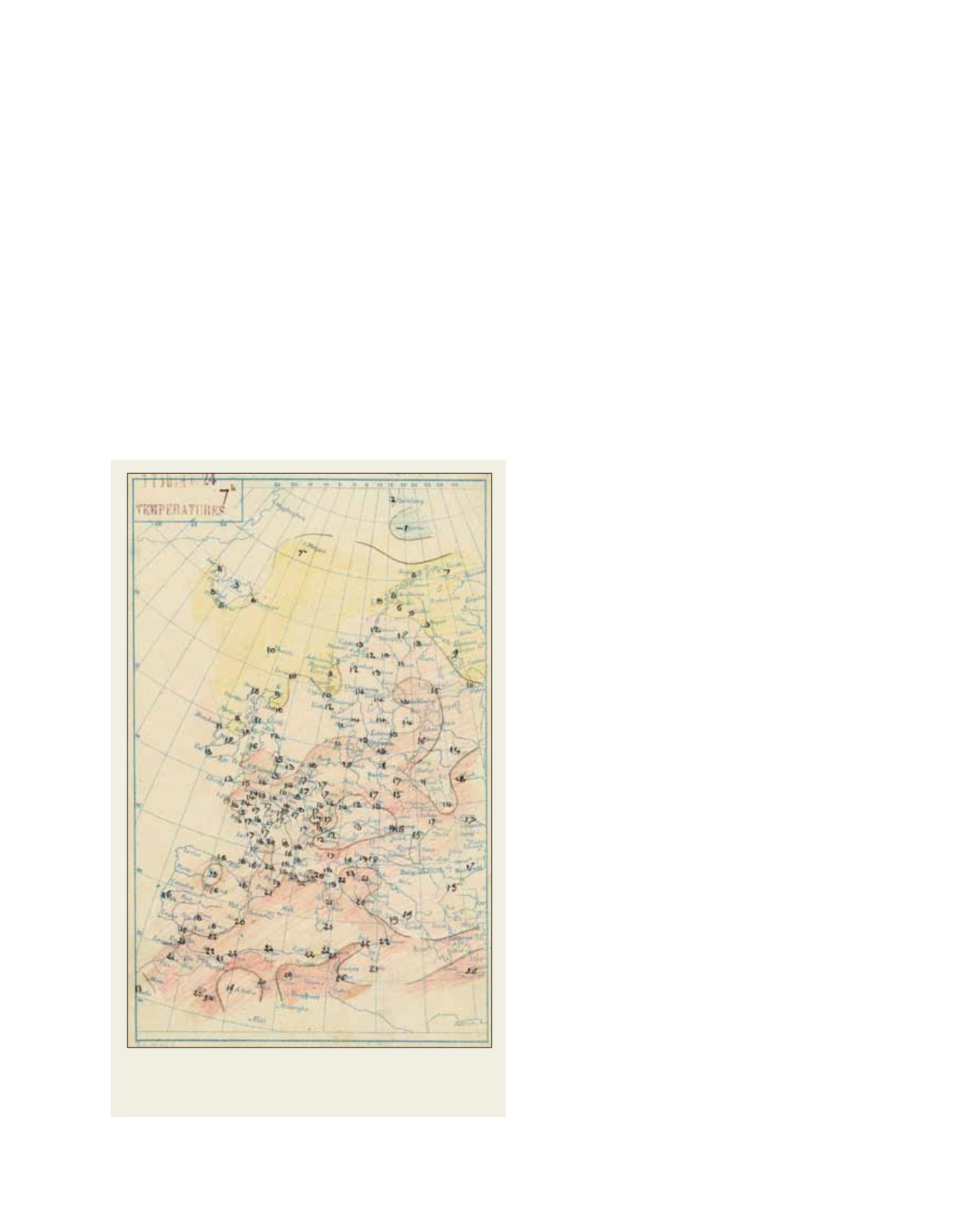

Data rescue at Météo-France
Advocating for data rescue and convincing a wide range of actors is
a necessary step to ensure that all stakeholders bring resources and
work together, beginning with the recognition that old documents
are a major community asset and a rich source of knowledge for
coping with climate change effects. Data rescue at Météo-France is
no longer a research activity. Météo-France’s climatologists put a
special emphasis on archives, aiming to preserve old documents still
kept in-house in good condition. It is now necessary to look again
at these documents, as climatologists who had typically worked at
monthly timescales a few years ago must now reprocess daily or
sub-daily data as they focus on extreme events. There is also a need
to search in various archiving agencies for unknown documents and
retained information.
Climatologists first of all want to retrieve observations from old
documents. Enriching the data banks is not the sole goal. They
definitely dream of raw data but also of the compulsory metadata,
explaining the measurements’ conditions and thus enabling a
[
] 269
C
apacity
D
evelopment
higher quality of existing series and derived diagnos-
tics. A primary goal for Météo-France is to improve
the quality and length, but also the spatial and param-
eter coverage of the existing series, used for detection
and attribution of climate change. Data rescue feeds
analysis and reanalysis. Preservation and recovery are
the first steps, followed by a stringent homogenization
procedure. Homogenization is a geostatistical evalua-
tion of the series: it detects shifts due to the evolution
of measurement conditions. While the tradition was a
day-to-day quality control of the observation, clima-
tologists now check the quality of the entire series.
They shed light on the vital need for metadata related
to the measures. For example, which instruments were
used? When was such a new model put in place? Did
the surrounding conditions evolve?
Various other aims motivate data rescue. One should
first of all mention political motivation: society must be
sure that climatologists have made all possible efforts
to improve the quality of the delivered diagnosis, and
exploited all potentially available information gathered
by the meteorological services. Facts can be criticized
and they need to be as strong as possible. Secondly, and
not least, our duty is to provide climate research with
all elements that would help scientists to better under-
stand the Earth’s climate system: long series, facts and
figures, especially on extremes or gaps, such as wars,
ex-colonies or upper-air, all being targeted as primary
goals for global reanalysis projects.
The originality of the current effort at Météo-France
lies in the transfer of such activities from a research
mode to operations. Meteorologists in every local
service, including in overseas territories, are commit-
ted to these tasks. Homogenization, which requires
skills and was originally a research effort, is becom-
ing a more widely spread skill for climatologists. This
opens their horizons to climate science, and they
gradually move from data control to climate analysis,
trends and extremes, enabling them to fruitfully inter-
act with climate scientists and enriching their dialogue
for mutual benefit. Data rescue and homogenization is
therefore also a strategy for improving skills and widen-
ing horizons. This is true in the meteorological service
and it appears to be true outside. Climate services are
not so far away when it comes to educating partners in
impact communities.
Cross-cutting partnerships
Data rescue actions are carried on in our offices,
where a lot of archives are kept. The organization of
the preservation and archive automatically opened
the meteorological community to partners, mainly
archivists. This partnership is critical. Not only does
it bring knowledge on archiving, but it also opens
connections with partners from communities like
historians or heritage specialists who enrich climate
knowledge. Documents are also searched for in various
archive agencies and libraries, having national, local or
thematic duties. Documents are located, identified and,
Source: Météo-France and Archives Nationales
A chart of temperatures for 07:00 on 17 June 1924 – The values on such
charts can help today’s climatologists to understand rapidly changing
climate events
















